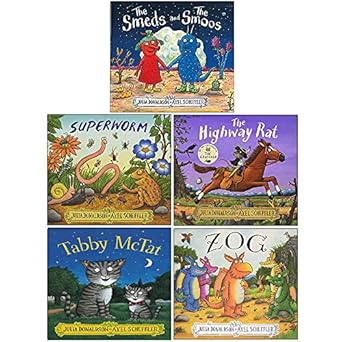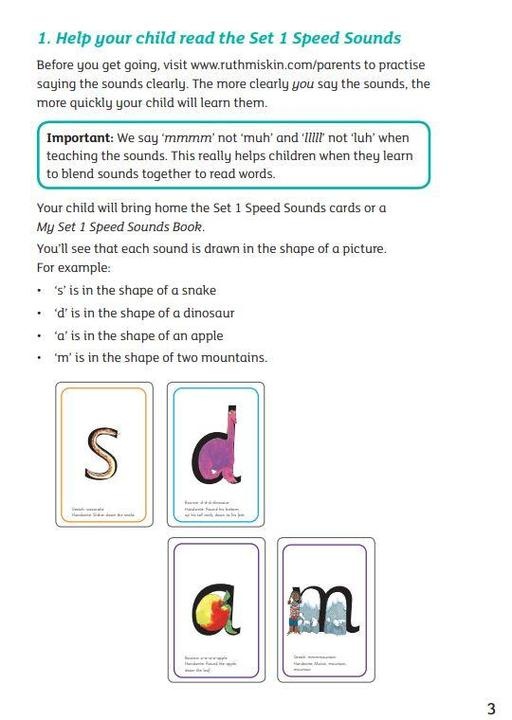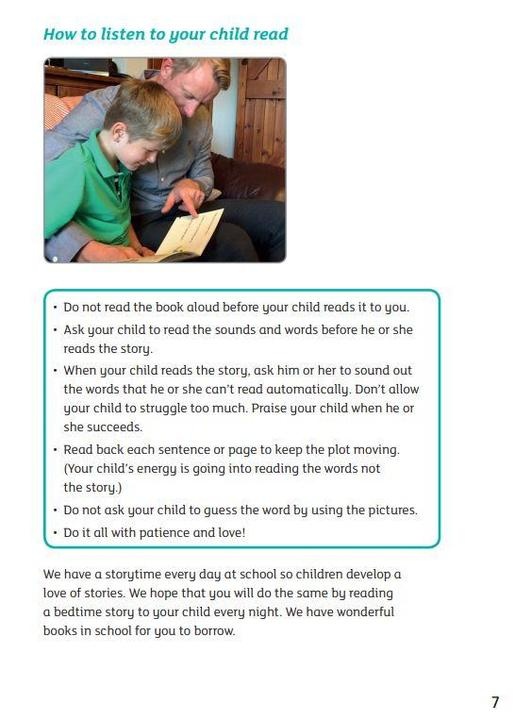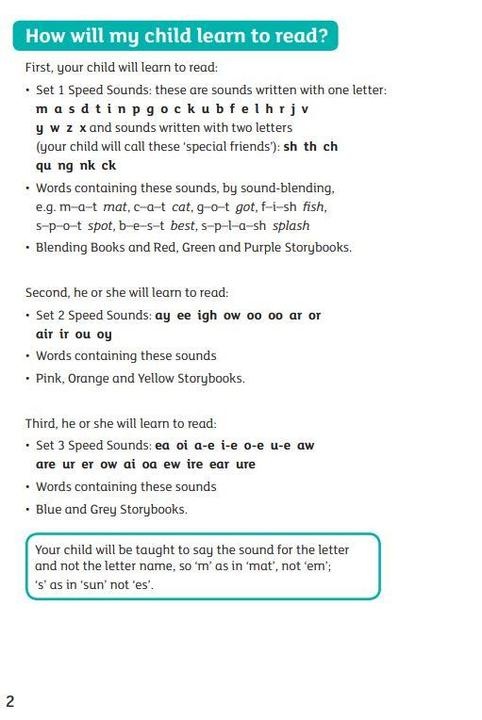Phonics
At St Mary and St Joseph's RC Primary School we use the Read, Write Inc (RWI) phonics programme to get children off to a flying start with their English.
RWI is a method of learning based upon letter sounds and phonics, and we use it to support children in their reading and writing. Reading opens the door to learning. A child who reads a lot will become a good reader. A good reader will be able to read more challenging material. A child who can read more challenging material is a child who will learn. The more a child learns, the more he or she will want to find out.
Using RWI, the children learn to read effortlessly so they can put all their energy into comprehending what they read. It also allows them to spell effortlessly so they can put all their energy into composing what they write. The children are assessed regularly and grouped according to their ability. They will work with a RWI trained teacher or teaching assistant. In addition to RWI, children will also be working on writing skills in their classes with their own teacher.
Read, Write Inc. Parents Guide
Click on the link below to access the full parents guide on the official Read, Write Inc. website. Here you will find guidance on all aspects of the programme and how you can support at home.
-
Read, Write Inc Read Write Inc guidance for parents
How does Read, Write Inc work
What is synthetic phonics?
When your child is learning to read there are two crucial aspects to learn:
- the sounds represented by written letters
- how to blend the sounds together to make words.
Synthetic Phonics is a way of teaching reading. Read Write Inc. is a popular synthetic phonics scheme.
Children are taught to read letters or groups of letters by saying the sound(s) they represent; for example, they are taught that the letter 'l' sounds like llllll when we say it. Children can then start to read words by blending the sounds together to make a word. There are 26 letters of the alphabet but they make 44 sounds.
When using RWI to read the children will:
- Learn to read effortlessly so that they can put all their energy into understanding what they read.
- Learn 44 sounds and the corresponding letter/letter groups using simple picture prompts.
- Learn to read words using Fred Talk.
- Learn to read words by blending the sounds together.
- Read lively stories featuring words they have learnt to sound out.
- Show that they understand the stories by answering 'Find It' and 'Prove it' discussion questions.
When using RWI to write the children will:
- Spell effortlessly so that they can put their energy into working out what they want to write.
- Learn to write the letters/letter groups which represent the 44 sounds (graphemes).
- Learn to write words by saying the sounds in Fred Talk.
- Learn to write simple and then increasingly complex sentences.
Blending
Children learn to read words by sounding-blending (Fred talk) eg. c-a-t = cat, sh-o-p = shop. Children learn to say the pure sounds ('m' not 'muh', 's' not 'suh' etc.) as quickly as they can, and then blend the sounds together to say the whole word. Each week children will bring home a set of words which they will be able to blend using their speed set sounds. These words are called GREEN words. In class your child will use Fred the Frog to blend sounds. We call this 'Fred Talk' because Fred cannot say a whole word. In Read, Write Inc there are also RED words. These are the tricky words which cannot be read using sounds, words such as 'said', 'the' and 'be'. Your child will need to read these words by sight. The phrase to remember is 'You cannot Fred a Red'!
This is a link to a video demonstrating how to teach blending
How Read, Write Inc is taught
Phonics at St Mary and St Joseph's
All children in Key Stage One will take part in a phonics lesson everyday. The daily RWI group lesson lasts for 45 minutes and includes reading, spelling, handwriting and comprehension. In Year One, there is an additional afternoon lesson to consolidate sound recognition and speed of reading.
For the bottom 20% of readers within each year group, catch-up is provided through one-to-one tutoring and additional reading practise. These children are closely monitored in their progress, with the scheduling of fortnightly assessments. Families of these children are strongly encouraged to come into school to discuss their child's progress with Mrs Addy and seek advice about how to help at home.
All teachers and support staff are fully trained in order to develop an excellent teaching team across the school. Our reading leader, Mrs Addy, runs sessions to train and coach staff, ensuring that they are continuously developed in their teaching expertise.
Who is Fred?
Fred is a (toy) frog and Fred can’t read! He can only say words in pure sounds. We use ‘Fred talk’ to help blend the sounds together in words to help Fred to read. We then move onto ‘Fred in your head’ to increase our fluency.
The children can’t use the skill of ‘Fred Talk’ or ‘Fred in your head’ for all words, as some do not follow the phonics rule. For example, ‘the’ ‘are’ and ‘some’. Therefore, these are taught as Red words within Read, Write, Inc. We teach them as sight words and the more children are exposed to them, the more they are instilled in their long term memory.
Sounds
The children are taught the sounds in 3 sets.
Set 1:
Set 1 Sounds are taught in the following order together with rhymes to help children form the letters correctly and instantly recognise sounds ready for blending.
m a s d t i n p g o c k u b f e l h r j v y w z x
These are the Set 1 sounds written with two letters (your child will call these ‘special friends’):
sh th ch qu ng nk ck
Learning to blend with Set 1 Speed Sounds
Your child is learning to read words containing Set 1 Speed Sounds by sound blending. For example: s-a-t / sat th-i-n/thin m-a-n man. When children are able to blend and read words containing set one sounds they will move onto the red books.Set
Set 2:
ay ee igh ow (as in blow) oo (as in zoo)
oo (as in look) ar or air ir ou (as in out) oy
Set 3:
(as in tea) oi (as in spoil) a–e (as in cake) i–e (as in smile)
o–e (as in home) u–e (as in huge) aw (as in yawn) are (as in care)
ur (as in nurse) er (as in letter) ow (as in brown) ai (as in snail)
oa (as in goat) ew (as in chew) ire (as in fire) ear (as in hear)
ure (as in pure)
Reading books with Set 1, 2, and 3 Speed Sounds
Once children have learnt all three sets of Speed Sounds, they need to practise them and read books with words made up of those sounds.
Assessment
All children are assessed every six weeks. During the online assessment they are asked to recognise and say letter sounds and blend to read words containing these sounds. Assessments are used to group the children. This ensures that they are working witihin the correct group to accelerate their progress.
reading at Home
Reading at Home
Family engagement in children's reading at home is valued highly in our school. Reading at home is fun and gives children such a boost to their confidence and interest in learning to read. Reading support at home makes for quicker progress and quality time between child and parent.
An active role in supporting your child's reading can be taken through:
- Providing a book bag to keep books safe and weather-proof. It should be brought to school each day, allowing your child to practise the same book at home and in class reading time.
- Hearing your child read every day at home, praising success and supporting their efforts.
- Checking Class Dojo for the RWI e-book and sound practice links uploaded by your child's teacher at the end of each week.
- Helping your child to practise the speedy reading of sound cards when they are sent home.
- Not worrying if your child's reading book seems too easy! They should be able to read book bag books speedily and with expression, because they will contain words and phrases already taught in lessons that week.
- Using useful websites that link to our school's reading programme, such as:
First Phonics Homework
When children begin learning phonics in Reception Class they will bring home a letter sound card and a handwriting sheet. This will help parents/carers to know what letter sounds they have learnt in school so that they are able to practise at home. Parents/carers will also receive a link to a RWI video which they can watch at home, which is a short phonics lesson. This is a wonderful way for children to recap lessons and learn alongside a RWI teacher. It is also useful for parents/carers as they are able to see how lessons are taught and ensure that the children are saying the sounds correctly and forming letters correctly when completing the writing sheets.


First Blends Books
Once children can blend fluently and know the first letters they will bring home books containing words with these sounds. This means that they will be able to say and blend the sounds together to read each word.

Read, Write Inc Books
When children are confidently blending and know the first set of letters sounds including 'special friends' they will begin working though the reading scheme. Children will bring home two books from the level which they are reading. One book they will have read in school for the week. They will be familiar with this book and should be able to read this with a high level of independence. The second book is a 'book bag' book. This is new to the children. It contains all of the sounds they have been learning and is fully decodable. They should be able to have a good try at reading this independently. If they continue to read this at least three times a week, they will become more fluent with their reading. This means that they will begin to read quickly without sounding out each word. Fluency is essential when reading as it helps us to be able to understand the text.

Library Books
All children in Key stage one visit the library weekly. They are able to choose from a wide selection of both fiction and non-fiction books. These are books for enjoyment. Children may need a grown up to read this book to them. At St Mary and St Joseph's this is one of the most important things that you can do at home with your children. We want all of our children to grow a love of books which develops into a love of reading for pleasure.
If you would like acces to the school library please ask. If you would like to come and use this resource as a family you are more than welcome to. Please speak to Mrs Addy who will be able to help.

Advice on any aspect of home-reading can be sought from ther class teacher or Mrs Addy, who is available to contact through class dojo or on the Early Years gates each day. Appointments can be made with her to support you further in reading with your child at home.
Useful Resources
Speed Sounds Chart
In class children have access to a Speed Sounds chart to help them when writing. This contains the letter sounds in each of the three sets alongside the picture. Use th link below to download the Speed Sounds Chart.
Handwriting phrases chart
When we teach hand writing we use a short phrase to help the children to form letters correctly. This is extremely important as
Forming Letters Correctly
When learning to write letters we use the Read, Write Inc. hand writing phrases to support our children. As we write the letter the phrase helps us to form the letter correctly, for example a = round the apple, down the leaf.
Use the link below to view the handwriting phrases for each of the letters. The powerpoint presentation is also a great way to see how letters are formed correctly.
Book Marks
To support every child in learning the tricky red words we have introduced book marks. This will have the red words which your child is currently learning to read and spell. If it is not same colour as the reading book please do not worry. Please try reading the words from the book mark at least three times a week alongside their reading books. Please do not try to spell these all at once. You can simply choose two or three a week to focus on as a little extra practise at home.
Phonics Workshops
Throughout the year we will hold parents phonics workshops. These are a wonderful opportunity for you to come into school and work alongside your child during a phonics session. You will receive lots of resources, support and ideas on how you can help your child with learning early reading and writing skills at home.
Useful Websites
- Letters and sounds Fun interactive games to help learn letter sounds
- Fun Phonics Games Fun interactive games to learn letter sounds
- Alphablocks
- Phonics Play Interactive phonics games
Phonics News







